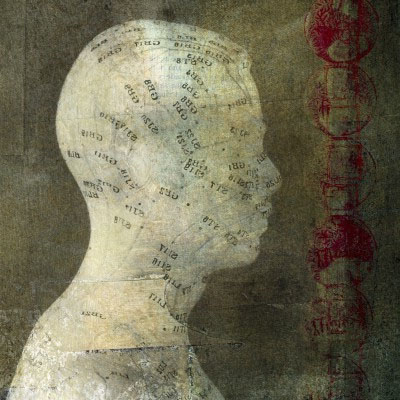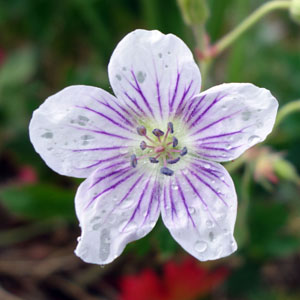 Acupuncture is the most commonly used modality in the medical system known as Chinese medicine. In the basic form, it is the insertion of fine needles into the body to bring about a therapeutic effect. In the deepest form, it is a complex medical system designed to bring balance and harmony to mind, body and spirit.
Acupuncture is the most commonly used modality in the medical system known as Chinese medicine. In the basic form, it is the insertion of fine needles into the body to bring about a therapeutic effect. In the deepest form, it is a complex medical system designed to bring balance and harmony to mind, body and spirit.
Acupuncture is believed to have begun in China around 5,000 years ago. However, a recent discovery in Europe opened the possibility it may have European origins predating its emergence in the Orient.
In 1991, a frozen, mummified human emerged from a glacier in Italy. Named Otzi, the mummy had approximately 57 carbon tattoos consisting of simple dots and lines on his lower spine, behind his left knee and on his right ankle. Scientists used X-rays to determine that the iceman may have had arthritis in these joints and they speculated that these markings may be related to acupuncture. (Alpine iceman reveals Stone Age Secrets, February 18, 2005.)
Nonetheless, acupuncture was most certainly popularized and refined in China. It wasn’t until the early 1970’s that acupuncture gained popularity in the West. During President Nixon’s historic visit to China, American journalist James Reston had an appendectomy using acupuncture as an anesthetic. That event marked the beginning of acupuncture’s rise in popularity in the United States.
Understanding the Concept of Qi
 To understand acupuncture, one must first grasp the concept of Qi. Often translated as energy in the broadest sense, this definition needs some refinement. Qi permeates the universe and gives form to the world.
To understand acupuncture, one must first grasp the concept of Qi. Often translated as energy in the broadest sense, this definition needs some refinement. Qi permeates the universe and gives form to the world.
Similar to the Force from Star Wars lore, Qi is an energy which enriches, protects, nourishes and animates us. Contained in the food we eat and the air we breathe, Qi is also the energy that transforms a seed into a plant.
According to the theories of Chinese medicine, acupuncture works by regulating the Qi flow in the body. When the flow of Qi is imbalanced, interrupted or deficient, illness ensues.
Qi flows through a network of energy pathways called meridians. By inserting needles into specific acupuncture points along the meridians, the body’s Qi flow can be influenced and regulated. Acupuncture regulates the harmonious flow of Qi, returning balance and restoring health.
Free Flow and Removing Blockages
In Chinese medicine, it is often said that if there is free flow, there is no pain; if there is no free flow, there will be pain. This refers to the free and unobstructed flow of Qi. If the Qi flow is blocked, pain ensues. An acupuncture treatment reestablishes the correct flow of Qi, resulting in pain relief.
If the Qi flow is blocked, pain ensues. An acupuncture treatment reestablishes the correct flow of Qi, resulting in pain relief.
Looking at this from a western perspective, a tight muscle can result in pain. Pain is would relieved when the muscle relaxes. When acupuncture needles are inserted into the origin and insertions of muscles, or where muscles attach to bones, the muscles relax. Depending on your perspective, you can see pain relief can either as the muscles relaxing, or the re-establishing proper flow of Qi.
The mechanism of how acupuncture works has never been well explained by Western science. Theories abound about increases in blood circulation, neurotransmitters sending signals to the brain or the stimulation and release of endorphins, but nobody really knows for sure. That’s why, when explaining how acupuncture works, it is best to use the Qi model.
Acupuncture Points and Needle Points
Acupuncture points have different functions. Some are said to circulate Qi; others raise Qi; others strengthen Qi. Some points strengthen the function of certain organs. Others are located where muscles and tendons meet, thus being more useful for musculo/skeletal conditions such as shoulder pain or tennis elbow.
The 14 main meridians in the body hold 365 acupuncture points, and near them are additional points. Of these, approximately 100 are considered major points and are frequently used.
Needles are disposable and made from stainless steel. They measure from one-half inch to two or more inches in length. They are slender, with diameters usually about the size of a dog’s whisker, so patients feel little sensation when a needle is initially inserted.
A practitioner gently manipulates the inserted needle to obtain a sensation called “de qi.” In Chinese, this means the arrival of the Qi sensation. It can feel like a dull ache, a sensation of heat, a feeling of prickles or numbness or a radiating sensation from the acupuncture point. Some people report feeling the movement of Qi during a treatment, but an equal number report not noticing any sensation. However, both these groups still benefit equally from acupuncture treatment.
How Long Does it Take?
Acupuncture needles are usually left in for 20 to 30 minutes.  The points are chosen based on the person’s ailment and diagnosis. Using a headache as an example, an acupuncturist might place needles in the patient’s hands between the thumb and index finger, at the nape of the neck and along the temple. A couple extra sets of points in the arms or legs would likely be chosen based on the person’s Chinese medicine diagnosis.
The points are chosen based on the person’s ailment and diagnosis. Using a headache as an example, an acupuncturist might place needles in the patient’s hands between the thumb and index finger, at the nape of the neck and along the temple. A couple extra sets of points in the arms or legs would likely be chosen based on the person’s Chinese medicine diagnosis.
The number of treatments needed varies; anywhere from two to 12 or more is normal. It might take just a couple treatments to obtain relief from an acute headache, whereas it could take a year or more to obtain satisfactory results for an ailment like chronic fatigue syndrome.
Patients often experience a deep sense of relaxation after an acupuncture treatment. Pain relief can be immediate, especially for acute conditions, like a sprained ankle. With chronic conditions, such as a bad back, it may take five or more treatments before one starts noticing a difference.
How Safe is Acupuncture?
Acupuncture performed by a qualified practitioner is very safe. One large study found only 43 minor adverse events associated with over 30,000 acupuncture treatments. (MacPherson P, et al. The York acupuncture safety study: prospective survey of 34,000 treatments by traditional acupuncturists. BMJ September 1, 2001;323:486-7)
